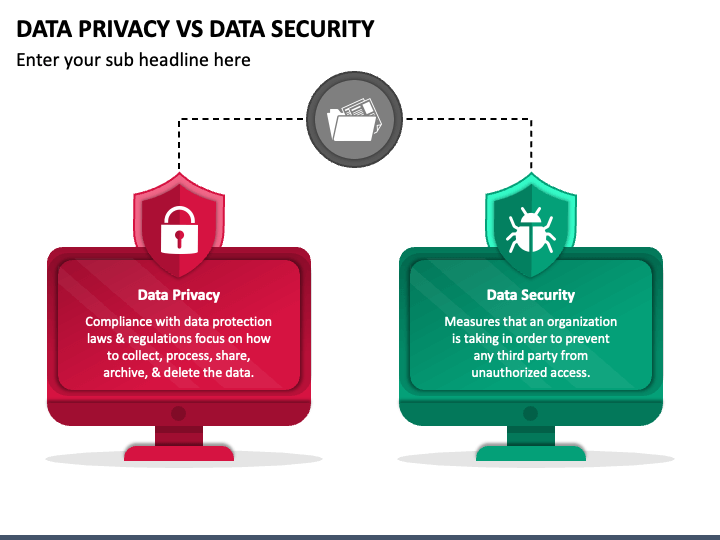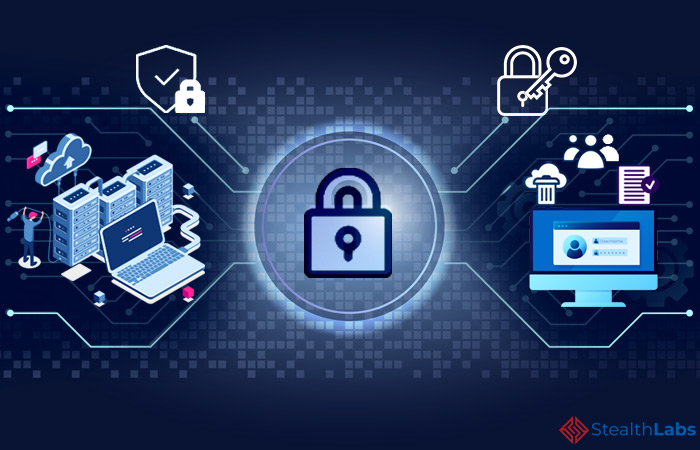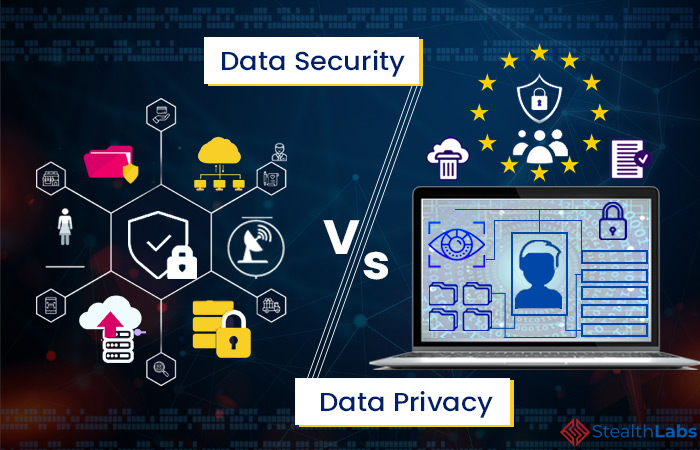Security and data protection are critical components of modern business operations. Ensuring the safety of sensitive information is paramount for customer trust and regulatory compliance.
In today’s digital landscape, the safeguarding of data is not just a necessity but a cornerstone of a successful enterprise. Companies are investing heavily in robust security measures to ward off cyber threats and data breaches. This proactive approach to cybersecurity helps maintain the integrity and confidentiality of valuable information.
As consumers become more aware of their digital footprint, they increasingly prioritize businesses that demonstrate a commitment to data protection. A reputation for secure operations can be a significant competitive advantage in any industry. The integration of advanced security protocols is, therefore, an essential strategy for both risk management and business growth. It’s essential for businesses to communicate their security and data protection measures clearly to their customers, establishing a foundation of trust and reliability.

Credit: www.algolia.com
The Rise Of Cybersecurity Threats
The Rise of Cybersecurity Threats has become a pressing concern for individuals and businesses worldwide. As technology advances, so do the techniques of cybercriminals. This digital arms race demands robust security measures to protect sensitive data and maintain privacy.
Recent Cyberattack Statistics
Recent findings reveal a surge in cyberattacks, showcasing the critical need for improved cybersecurity protocols. The numbers speak volumes about the growing sophistication and frequency of these digital threats.
| Year | Incidents | Cost of Data Breach |
|---|---|---|
| 2021 | Over 1000 significant breaches | $4.24 million per incident |
| 2022 | Increasingly frequent | Expected to rise |
Common Types Of Cyber Threats
Cyber threats come in various forms, each with unique tactics to infiltrate systems and exploit vulnerabilities. Awareness is the first step in defense.
- Phishing: Fraudulent emails trick recipients into giving out personal information.
- Ransomware: Malware that locks data until a ransom is paid.
- Spyware: Software that secretly gathers user information.
- Trojans: Malicious code disguised as legitimate software.
- DDoS Attacks: Overload systems to disrupt service.

Credit: www.sketchbubble.com
Importance Of Data Protection
Protecting data is key in our digital world. Businesses hold sensitive information about clients and employees. This data can include names, addresses, and financial details. Safeguarding this information is not just about privacy; it’s about maintaining trust. A data breach can lead to serious harm for individuals and companies alike. Strong security measures are essential.
Consequences Of Data Breaches
Data breaches can have far-reaching impacts. They can cause financial loss and damage reputations. Trust is hard to win back once lost. Customers may choose to leave for competitors. Businesses may face legal actions and heavy fines. The table below shows common outcomes of data breaches:
| Outcome | Description |
|---|---|
| Financial Loss | Costs from legal fees, penalties, and lost business. |
| Reputation Damage | Loss of public trust and brand devaluation. |
| Legal Consequences | Possible lawsuits and regulatory fines. |
Regulatory Compliance And Legal Implications
Businesses must follow data protection laws. These laws vary by country and region. For example, the GDPR in Europe sets strict rules for handling personal data. Failing to comply can lead to penalties.
- Heavy fines: Non-compliance can result in large fines.
- Legal actions: Individuals may sue if their data is mishandled.
- Regulatory audits: Companies may face frequent checks from authorities.
Compliance is not just about avoiding fines. It shows commitment to data security. This builds trust with customers and partners.
Personal Data Security Best Practices
Keeping your personal data safe is essential in today’s digital world. Implement best practices to protect your information from threats. Use strong passwords and enable two-factor authentication. These steps can shield your data from unauthorized access.
Strong Password Strategies
Strong passwords act as the first line of defense. Keep them complex and unique for each account. Follow these tips:
- Mix letters, numbers, and symbols.
- Use a minimum of twelve characters.
- Avoid common words and phrases.
Consider using a password manager. It generates and stores strong passwords securely.
Two-factor Authentication
Two-factor authentication adds an extra security layer. It requires a second form of identification. This step makes it harder for intruders to gain access.
- Choose a method: text message, email, or an authenticator app.
- Follow the setup instructions for your account.
- Enter the code provided when you log in.
This simple habit can significantly increase your data security.

Credit: www.stealthlabs.com
Business Strategies For Data Protection
Data protection is a critical element for any business in the digital age. Companies must ensure the safety and privacy of their data to maintain trust and comply with regulations. Proper strategies for data protection can reduce risks of breaches and data loss. The following sections highlight key strategies that businesses can adopt to strengthen their data security posture.
Employee Training And Awareness
Employees are the frontline defenders of any organization’s data security. Training programs can empower them to recognize threats. Below are steps to enhance employee data protection skills:
- Regular Training Sessions: Conduct workshops on the latest security threats and prevention methods.
- Phishing Simulations: Run mock phishing attacks to test and improve employee awareness.
- Best Practice Guidelines: Share clear, concise guidelines on data handling and password management.
- Reporting Mechanisms: Implement easy-to-use systems for reporting suspicious activities.
Implementing Access Controls
Access controls are critical for protecting sensitive information. They ensure only authorized personnel can access specific data. Here’s how to apply access controls effectively:
- Role-Based Access: Assign data access based on job roles and responsibilities.
- Authentication Protocols: Use strong passwords and multi-factor authentication to verify user identities.
- Regular Access Reviews: Periodically review access rights to ensure they are still appropriate.
- Audit Trails: Keep logs of who accesses data and when, to track and analyze any irregularities.
Technological Solutions For Enhanced Security
Businesses today face an array of cyber threats. Strong security measures are essential. The right technology can make all the difference. Let’s explore key technological solutions that fortify security and protect data.
Firewalls And Encryption
Firewalls serve as the first line of defense. They block unauthorized access to networks. Encryption is equally crucial. It scrambles data, making it unreadable to intruders.
- Hardware Firewalls: These are physical devices. They filter traffic entering a network.
- Software Firewalls: Installed on computers. They monitor and control outgoing and incoming traffic.
- Data Encryption: Converts sensitive data into a secure format. Only those with the key can decrypt it.
Secure Backup Solutions
Secure backups protect against data loss. They are a safety net for your data. With the right solution, your data remains safe, even during a breach.
| Type | Description | Benefits |
|---|---|---|
| Cloud Backups | Store data offsite, on remote servers. | Accessible from anywhere. Offer scalability. |
| Local Backups | Save data on local storage devices. | Quickly restore data. No internet needed. |
| Hybrid Backups | Combine cloud and local backups. | Blend the benefits of both methods. |
The Role Of Artificial Intelligence In Security
The Role of Artificial Intelligence in Security is transforming the way organizations protect their data and systems. AI’s ability to quickly analyze vast amounts of information makes it a powerful ally in the fight against cyber threats.
Ai For Threat Detection
Artificial Intelligence excels at identifying potential security threats at a speed unmatched by human analysts. AI systems can sift through data and recognize patterns that may indicate a security breach.
- Real-time monitoring: AI tools monitor network traffic continuously.
- Pattern recognition: Unusual behaviors trigger alerts for further investigation.
- Quick response: AI can initiate responses to threats instantly.
Automated Security Protocols
With AI, many security tasks are automated. This means systems can react to threats without waiting for human input. It ensures a swift and efficient defense against cyber attacks.
| Protocol | Function |
|---|---|
| Encryption: | AI encrypts data to protect against unauthorized access. |
| Access Control: | AI manages who can access certain information. |
| Incident Response: | AI quickly responds to and resolves security issues. |
Preparing For The Unexpected: Disaster Recovery
Businesses today must prepare for the unexpected. Disasters like cyber-attacks, natural calamities, or system failures can strike at any time. A robust Disaster Recovery plan is essential to bounce back quickly and safeguard data.
Designing A Disaster Recovery Plan
Disaster Recovery (DR) plans ensure companies resume operations after an unexpected event. Crafting a DR plan involves several steps:
- Identify critical assets: Determine which systems and data are vital to business functions.
- Conduct a risk assessment: Understand potential threats and their impact on operations.
- Set Recovery Point Objectives (RPOs) and Recovery Time Objectives (RTOs): Define how much data loss is acceptable and how quickly systems must recover.
- Plan for data backup: Choose effective data backup solutions to ensure data integrity.
- Establish roles and communication: Assign team members to specific DR tasks and outline communication procedures during a disaster.
- Document the plan: Create clear, detailed instructions for every DR process.
Regular updates to the DR plan keep it effective against new threats.
The Importance Of Regular Testing
Testing is vital to a DR plan’s success. Regular tests:
- Reveal weaknesses: Identify gaps in the DR strategy before an actual disaster occurs.
- Train staff: Ensure team members know their roles and can perform tasks under pressure.
- Verify RPOs and RTOs: Confirm if the business can recover data and resume operations within set objectives.
- Ensure data recovery: Check if backups are complete and data can be restored properly.
Businesses should conduct DR tests at least twice a year or whenever there are significant system changes.
Remember, preparing for the unexpected is not just about having a plan. It is about ensuring the plan works when it is most needed. Regular testing and updates turn a Disaster Recovery strategy into a safety net that lets businesses operate with confidence.
Future Trends In Security And Data Protection
As digital threats evolve, so do the measures to guard our data. The future of security and data protection promises to be fascinating. It introduces cutting-edge technologies and new legal frameworks. Let’s dive into some of the key trends that will shape the landscape in the years to come.
Quantum Computing Impact
Quantum computing is set to revolutionize data security. Traditional encryption could become obsolete. Quantum computers can solve complex problems much faster than current systems. This means they can break codes in a snap. Organizations are now working on quantum-resistant encryption to stay ahead.
- Development of quantum-safe algorithms is accelerating.
- Investments in quantum key distribution (QKD) are increasing.
- Businesses are starting to plan for quantum threats now.
The Evolving Landscape Of Privacy Laws
Privacy laws are changing fast. They aim to give people more control over their data. The EU’s GDPR was just the start. Now, many countries are adopting similar laws. Companies must keep up or face hefty fines.
| Region | Privacy Law | Key Requirement |
|---|---|---|
| EU | GDPR | Consent for data processing |
| California, USA | CCPA | Consumer data rights |
| Brazil | LGPD | Data protection measures |
Expect more laws and updates to come. Companies should focus on compliance and flexibility. Users are now more aware. They want to know how their data is used and protected.
Frequently Asked Questions
What Is Data Protection And Security?
Data protection and security involve safeguarding personal and sensitive information from unauthorized access, corruption, or theft through various measures and controls.
Why Is Data Security And Protection Important?
Data security and protection safeguard sensitive information from unauthorized access, ensuring privacy and maintaining trust in digital systems. Strong security measures prevent data breaches, which can lead to financial loss and damage to reputation.
What Is The Focus Of Data Protection?
The focus of data protection is to safeguard personal information from unauthorized access, use, disclosure, disruption, modification, or destruction.
What Are The Security Principles Of Data Protection?
Data protection rests on five core principles: confidentiality, integrity, availability, accountability, and privacy. These ensure secure data handling, safeguarding against unauthorized access, and upholding data accuracy.
Conclusion
Security and data protection are not just buzzwords; they’re pivotal in safeguarding our digital footprint. By prioritizing robust security measures and data privacy, businesses can build trust and ensure long-term success. Remember, investing in security is not an expense; it’s a smart move towards a safer future.
Take action now to defend your data and fortify your defenses.
